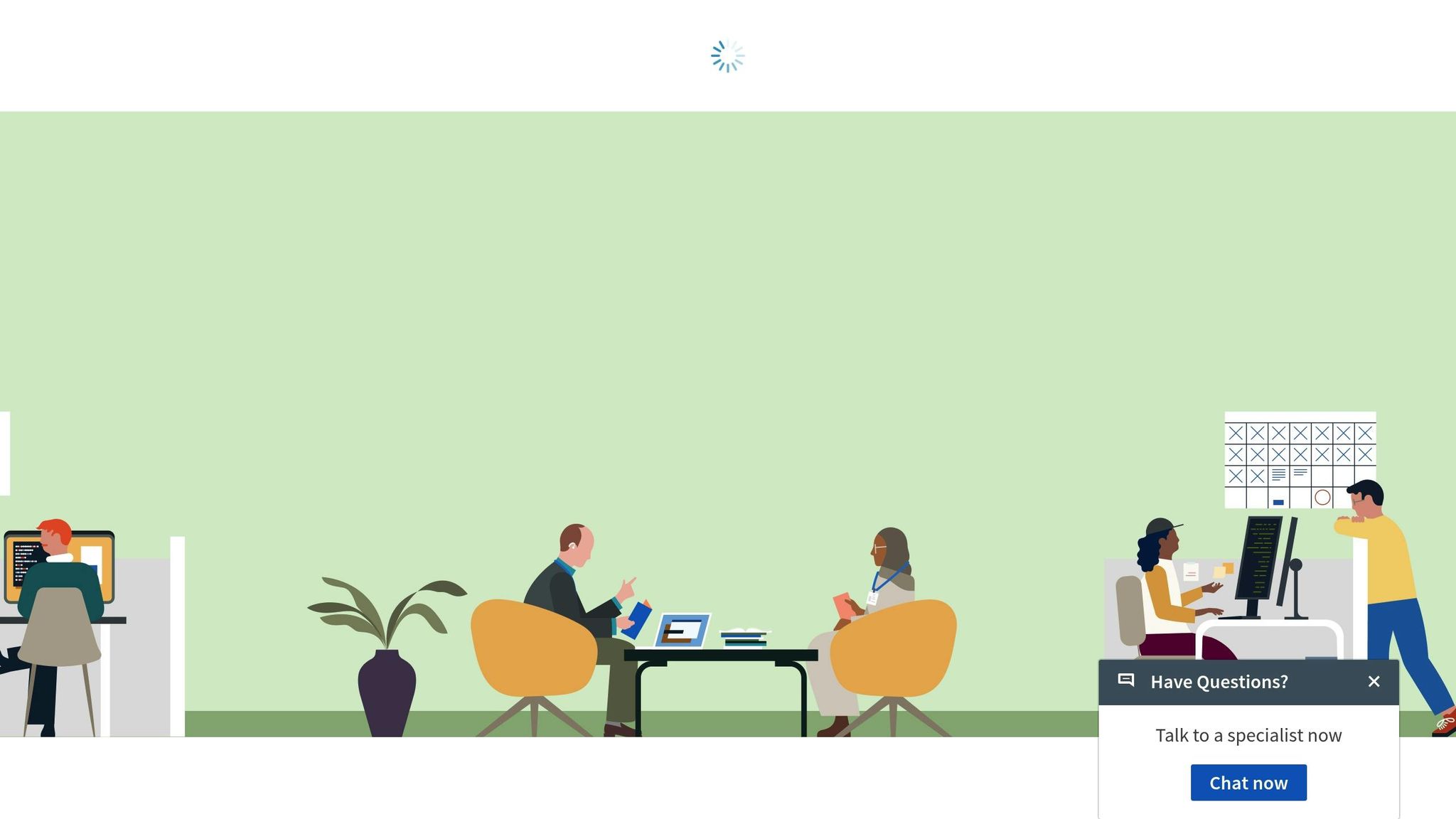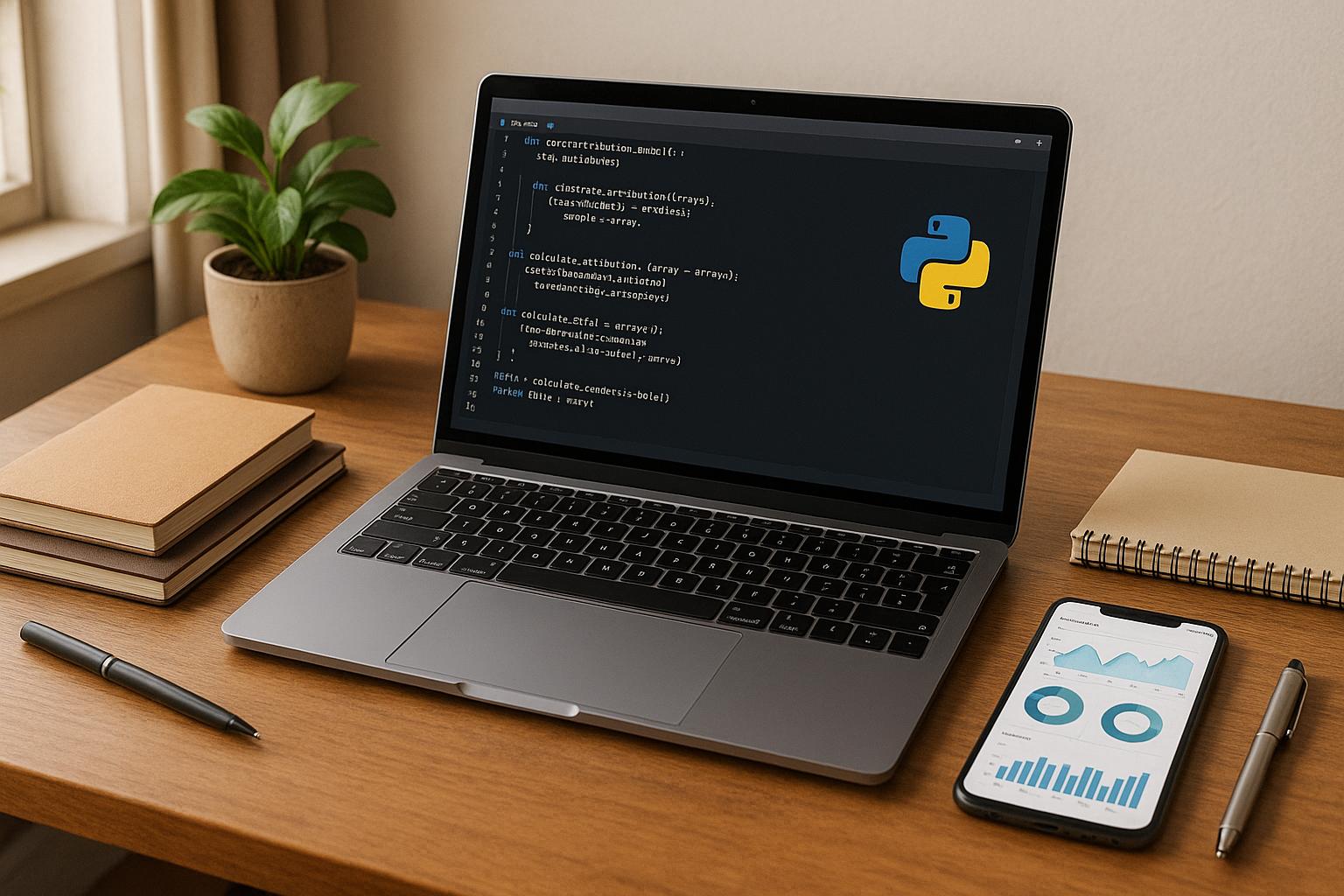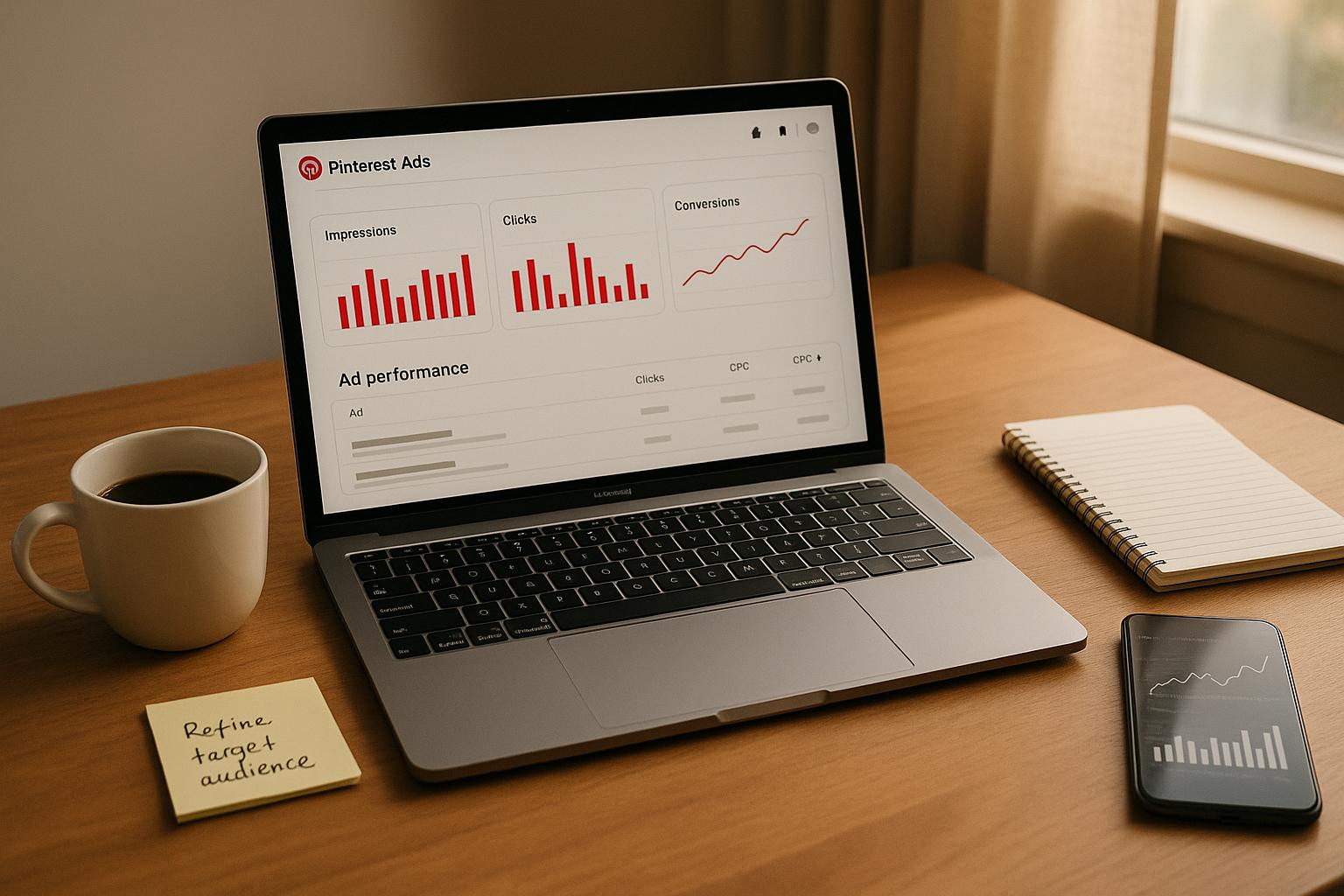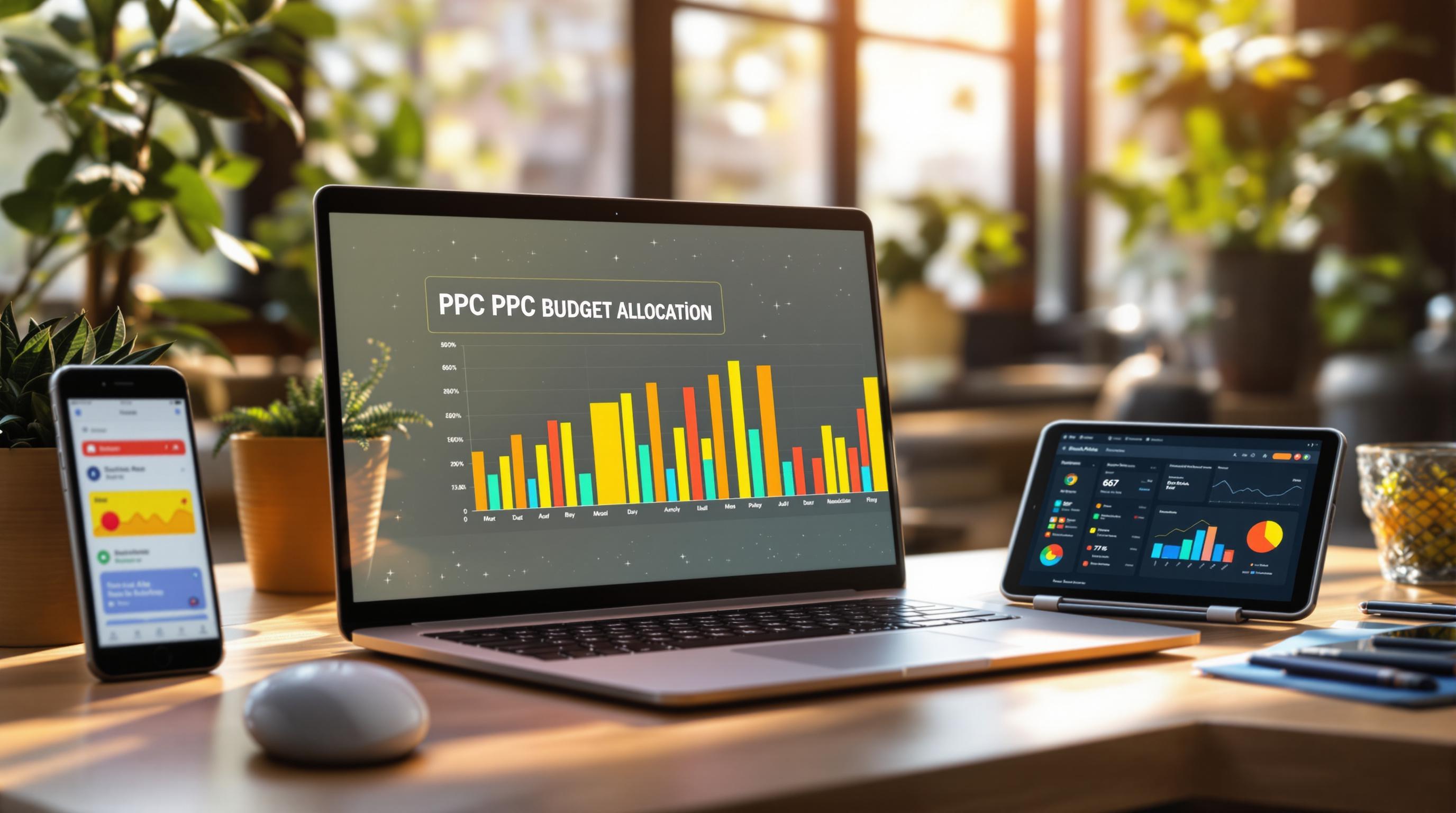LinkedIn ads can be expensive, but with the right strategies, you can maximize your return on investment (ROI). Here's how you can make your LinkedIn Sponsored Content work harder for you:
- Target the Right Audience: Use LinkedIn's advanced filters like job titles, industries, skills, and geographic targeting to reach decision-makers and professionals most likely to convert.
- Test and Refine Your Ads: Experiment with different ad formats (single image, video, carousel) and creative elements to find what resonates most with your audience.
- Use Smart Bidding Strategies: Choose between Maximum Delivery, Cost Cap, or Manual Bidding based on your campaign goals and experience level.
- Track Key Metrics: Focus on CPL (cost per lead), CTR (click-through rate), engagement rates, and ROAS (return on ad spend) to measure success and adjust campaigns.
- Align Ads and Landing Pages: Ensure your ad messaging matches your landing page content to reduce friction and improve conversions.
- Leverage LinkedIn Tools: Use Lead Gen Forms for easier data collection and Campaign Manager for tracking performance.
By focusing on precise targeting, cost efficiency, and regular performance tracking, you can make LinkedIn's higher ad costs a worthwhile investment.
This summary avoids the blocked words and uses plain, direct language. Let me know if you'd like to dive deeper into any specific section or adjust the tone further!
LinkedIn Sponsored Content and ROI Basics
What is LinkedIn Sponsored Content?
LinkedIn Sponsored Content is a type of native advertising that appears directly in users' feeds, blending in with organic posts. It’s designed to amplify your company’s message while reaching specific professionals based on their job titles, industries, or company sizes. Unlike traditional banner ads, these posts feel natural within the platform, ensuring they don’t interrupt the browsing experience.
There are several formats to choose from, including single image ads, video ads, and carousel ads. This seamless integration helps maintain user engagement while providing a solid foundation for tracking performance metrics that influence ROI.
Key ROI Metrics for LinkedIn Ads
To gauge the effectiveness of LinkedIn ads, focus on metrics like cost per lead (CPL), click-through rate (CTR), cost per conversion, engagement rate, and return on ad spend (ROAS). These indicators help refine both your targeting and creative strategies.
- Cost per lead (CPL): Typically falls between $50 and $100, depending on the industry and the specificity of your targeting. This metric ties your ad spend directly to the number of qualified prospects entering your sales funnel.
- Click-through rate (CTR): Sponsored Content averages a CTR of 0.4% to 0.6%, though well-optimized campaigns can exceed 1%. A low CTR might indicate that your messaging or targeting needs adjustment.
- Cost per conversion: Varies significantly by industry. For example, enterprise software companies often see conversion costs ranging from $200 to $500, while professional services may achieve conversions for $75 to $150.
- Engagement rate: Includes interactions like likes, comments, shares, and follows. A rate above 2% is considered strong, as LinkedIn’s algorithm rewards engaging content with increased reach and lower ad costs.
- Return on ad spend (ROAS): Generally ranges from 3:1 to 5:1, meaning every dollar spent generates three to five dollars in revenue.
LinkedIn's Value for B2B Marketers
LinkedIn offers more than just measurable metrics - it provides a professional environment and unmatched targeting capabilities, making it a top choice for B2B campaigns. With a database of over 900 million members, the platform allows marketers to target audiences with incredible precision using detailed career and industry information.
One of LinkedIn’s standout features is its intent signals. When users update their profiles, engage with industry-specific content, or join professional groups, they reveal their current business priorities. These real-time signals help marketers reach potential customers at the most opportune moments in their decision-making process.
Another advantage is the higher conversion quality LinkedIn delivers. While the cost per click might be 2–3 times higher than other platforms, the leads generated often convert at a rate 2–3 times higher. LinkedIn users are typically in a business-focused mindset, actively seeking solutions and insights, which makes sponsored content resonate more effectively.
Finally, LinkedIn’s account-based marketing (ABM) capabilities are a game-changer for B2B marketers. The platform enables precise targeting of specific companies, allowing for highly personalized campaigns tailored to key accounts. This level of customization supports sophisticated strategies that can maximize ROI and deliver measurable results.
How We Got 8:1 ROI on LinkedIn Ads (Without a Marketing Agency)
Audience Targeting and Segmentation
Effective audience targeting is the backbone of LinkedIn Sponsored Content campaigns. With LinkedIn's advanced targeting tools, you can connect with key decision-makers, but success hinges on striking the right balance between precision and reach. The goal is to ensure your message resonates with the right professionals without limiting your audience too much. Let’s explore some strategies to get the most out of LinkedIn’s targeting options.
Using LinkedIn's Advanced Targeting Options
LinkedIn offers more than just basic demographic filters - it provides a wealth of targeting options powered by its rich member data. By layering these options, you can create a highly refined audience.
- Job Titles: Instead of broad categories, focus on specific titles like "VP of Sales", "Chief Marketing Officer", or "Director of IT Operations." This approach helps you zero in on the professionals most likely to engage with your content.
- Industry and Job Function: Combining these filters can sharpen your targeting. For example, you might target professionals in "Software Development" within the computer software industry, ensuring your ads reach qualified leads while minimizing wasted spend.
- Skills and Interests: Target individuals with skills like "Marketing Automation", "Lead Generation", or "Account-Based Marketing" to connect with professionals actively involved in relevant areas.
- Geographic Targeting: Go beyond basic location filters by focusing on work locations. This is especially useful for reaching remote workers or professionals in key business hubs like New York, Chicago, or San Francisco, depending on your industry focus.
Best Practices for Audience Segmentation
Finding the right balance between precision and reach is essential when segmenting audiences. A group that’s too narrow might limit exposure and drive up costs, while a broad audience may dilute the impact of your messaging.
- Buying Stage Segmentation: Instead of relying solely on demographics, segment your audience by their stage in the buying journey. Use broad categories for awareness campaigns and create more tailored messaging for decision-makers in the later stages.
- Geographic Segmentation: Align your strategy with sales territories and market characteristics. For example, U.S. audiences might respond to ROI-driven messaging, while regional nuances should guide campaigns in broader markets.
- Company Size: Tailor your messaging to align with budget expectations. Larger enterprises often seek sophisticated solutions, while smaller businesses prioritize simplicity and quick results. Mid-market companies typically value solutions that can scale with their growth.
- Industry-Specific Segmentation: Customize your ads and landing pages for different industries. For instance, healthcare professionals may value compliance-focused messaging, financial services might prioritize security, and tech companies could seek seamless integration.
- Seniority Levels: Adjust your content based on professional roles. C-level executives prefer strategic, results-oriented messaging, while directors and VPs may focus on tactical details. Individual contributors often respond well to educational content that supports their career development.
Using Matched and Lookalike Audiences
Once you’ve mastered segmentation, advanced audience techniques can take your campaigns to the next level.
- Matched Audiences: Use your existing customer data for website retargeting or email list matching. For example, you can tailor messaging based on whether users visited a product page or read a blog post, ensuring your ads align with their interests.
- Lookalike Audiences: Expand your reach by targeting LinkedIn members who share characteristics with your best customers. LinkedIn analyzes traits like job titles, industries, and skills to find similar professionals who are likely to engage with your content.
- Contact and Company Targeting: Upload contact lists to target specific individuals, whether for event follow-ups or customer expansion campaigns. Similarly, company targeting allows you to reach multiple stakeholders within a single organization, which is particularly effective in complex B2B sales scenarios.
For maximum impact, combine these audience types strategically. Start with matched audiences to target high-intent prospects, use lookalike audiences to broaden your reach, and incorporate interest-based targeting to boost awareness. This layered approach not only supports immediate conversions but also builds a strong pipeline for the future, ensuring your ads reach the right professionals while keeping costs in check.
Bidding and Budget Management
Getting the most out of your LinkedIn Sponsored Content campaigns hinges on smart bidding strategies and careful budget management. The way you bid and allocate your budget can make or break your campaign's profitability.
Comparing Bidding Methods
LinkedIn provides three main bidding strategies for Sponsored Content: Maximum Delivery, Cost Cap, and Manual Bidding. Each offers a different balance between automation and control, impacting both how your budget is spent and your campaign's ROI.
- Maximum Delivery: This is a fully automated option designed to maximize your budget and drive results. It's ideal for brand awareness campaigns that need consistent exposure. However, it offers minimal control over individual bid amounts and may not always focus on profitability.
- Cost Cap: This strategy allows you to set a target average cost per result, while LinkedIn's algorithm adjusts your bids automatically. It helps manage costs efficiently but works best when you have a strong conversion history - at least 100 conversions in the past 30 days. Keep in mind, conversions may sometimes exceed your set cap.
- Manual Bidding: If you're running a new campaign, this is your go-to option. It gives you full control over bid amounts, making it easier to target less competitive segments and gather performance data. However, it requires regular monitoring and adjustments to stay effective.
| Bidding Method | Best For | Pros | Cons |
|---|---|---|---|
| Maximum Delivery | Brand awareness, steady ad exposure | Fully automated, maximizes budget use | Minimal control over bid prices and profitability |
| Cost Cap | Established campaigns with conversion data | Automated cost control | Needs a strong conversion history |
| Manual Bidding | New campaigns needing precise control | Full bid control, great for testing | Requires frequent manual adjustments |
Once you've chosen your bidding method, the next step is to allocate your budget effectively.
Best Practices for Budget Allocation
After selecting the right bidding strategy, focus on allocating your budget wisely.
Start with a conservative approach, especially for new campaigns. For instance, manual bidding with lower initial bids is often more effective than relying on LinkedIn's suggested bid ranges, which are typically designed to encourage higher spending rather than optimize for performance.
As your campaign progresses, use performance data to guide your decisions. Shift your budget toward segments that meet your ROI goals and scale back on underperforming areas. Keep in mind that B2B campaigns often require longer nurturing periods, so maintaining consistent visibility over time is key to building traction.
Automation Tools for Budget and Bid Management
LinkedIn's Campaign Manager offers automation features that simplify bid and budget adjustments. While these tools can save time, they still need regular oversight to ensure they align with your campaign objectives. For example, cost cap bidding works best when backed by a strong conversion history, as this allows LinkedIn's algorithm to perform at its best.
Additionally, LinkedIn's native tools provide accurate data and quick bid adjustments. Some advertisers also use third-party platforms to manage multiple campaigns across various channels. Regardless of the tools you choose, make it a habit to review bids regularly to keep performance on track.
sbb-itb-89b8f36
Ad Creative and Format Optimization
Improving Landing Page Alignment
Getting your landing page to match your ad creative and bidding strategies is a big deal when it comes to driving conversions. If your ad and landing page don’t align, it can confuse visitors and hurt your results. The content, call-to-action (CTA), and any special offers on your landing page should reflect the exact message in your LinkedIn Sponsored Content.
For instance, if your LinkedIn ad promises "5 Ways to Reduce Customer Churn", your landing page headline should repeat that benefit and include the same number. The copy on the page should then dive deeper into the promise made in the ad. This kind of consistency reassures visitors that they’re in the right place.
The same goes for your CTA. If your ad says "Download Now", make sure your landing page button uses the same language. This small detail reduces friction and reinforces trust, ensuring visitors know they’re on the right track.
When designing your landing page, make it easy for users to take action. Place a bold, eye-catching CTA above the fold where it’s impossible to miss. This seamless alignment between your ad and landing page lays the groundwork for more advanced creative strategies.
If you’re looking for an alternative to traditional landing pages, LinkedIn Lead Gen Forms are a great option. These forms pull data directly from a user’s LinkedIn profile - like job title, company name, and contact details - making it incredibly easy for them to submit their information with just a couple of clicks. Since users stay on LinkedIn, this approach can help reduce form abandonment and boost conversion rates.
For campaigns using Lead Gen Forms, keep your messaging short and sweet. Phrases like "Instant Access" work well to highlight how easy the process is. Also, make sure the forms load quickly and that CTAs are easy to tap on mobile devices. Many LinkedIn users browse the platform on their phones during work hours, so mobile optimization is key.
Finally, don’t forget to A/B test. Try out different headlines, form lengths, and page layouts to see what drives the most clicks and conversions. Testing is the best way to fine-tune your ad and landing page alignment for maximum impact.
Performance Tracking and Improvement
Key Metrics to Track for ROI
To measure ROI effectively, your tracking metrics should align with your campaign goals, whether you're aiming for brand awareness, consideration, or lead generation. Interestingly, only 37% of digital marketers report being highly confident in their ROI metrics.
For conversion-focused campaigns, LinkedIn's conversion tracking, combined with the Insight Tag, offers detailed performance insights. It tracks actions like downloads, sign-ups, purchases, and even conversions from users who saw your ad but didn’t click on it. This "view-through" conversion data is especially useful for understanding the multi-step decision-making process common in B2B scenarios.
In lead generation campaigns, LinkedIn's Lead Gen Forms allow for precise tracking. Key metrics include cost per lead, lead form fill rate, and the professional characteristics of leads, such as job title or industry. These insights help assess the quality of the leads your campaign generates.
For brand awareness campaigns, the focus shifts to metrics like reach, impressions, brand lift, and engagement rates. LinkedIn's built-in tools provide a range of metrics to measure performance in these areas, offering a comprehensive view of how your campaign resonates with your audience.
Another critical tool is Campaign Demographics, which reveals who is engaging with your ads. By analyzing professional details like job titles, seniority, company size, and location, you can ensure your message is reaching the intended audience and refine your targeting for future campaigns.
Once you've gathered these metrics, LinkedIn Campaign Manager can help you turn raw data into actionable insights.
Using LinkedIn Campaign Manager and Third-Party Tools

LinkedIn Campaign Manager is your go-to platform for tracking ad performance. To unlock its full potential, make sure you’ve set it up correctly and monitor it regularly. For example, the platform’s conversion tracking works best when you’ve added LinkedIn's Insight Tag to your website. This enables you to track key off-platform actions like form submissions or purchases.
Campaign Demographics within Campaign Manager offers a deeper look into the professional profiles of people interacting with your ads. This feature helps you verify whether your targeting is hitting the mark and can also uncover new audience segments worth exploring.
For businesses juggling multiple campaigns or seeking advanced analytics, third-party tools can complement LinkedIn’s reporting features. Platforms listed in the Top PPC Marketing Directory (https://ppcmarketinghub.com) provide tools to track LinkedIn campaigns alongside other advertising efforts, giving you a unified view of your performance across channels.
Testing and Data-Driven Adjustments
Once you've set up tracking, the next step is to experiment and refine your approach. A/B testing is a powerful method for improving LinkedIn ad performance. By changing one variable at a time - such as a headline, image, or call-to-action button - you can pinpoint what drives better results. LinkedIn's Campaign Manager introduced a built-in A/B testing feature in April 2023, providing a reliable framework for these experiments.
For marketers in the European Economic Area or Switzerland, A/B testing may be restricted due to regional laws. As a workaround, you can create multiple ad variations within a single campaign and ensure they rotate evenly.
When analyzing test results, focus on statistical significance. For instance, a P-value of 0.1 means you can be 90% confident in the results. This level of precision ensures that your adjustments are based on reliable data rather than guesswork.
Making data-driven adjustments is essential for improving ROI. By basing your decisions on test results, you can optimize key metrics like conversion rates and cost-per-conversion. Keep in mind that B2B sales cycles often take up to six months, so patience is key when evaluating the long-term impact of your changes.
Regularly tracking ROI over time allows you to spot trends and refine your strategy. Experimenting with different ad copy, creative elements, and landing pages will help you determine what resonates most with your audience, ultimately driving better results.
Conclusion: Key Takeaways for Maximizing ROI
To get the most out of LinkedIn Sponsored Content, focus on a mix of precise targeting, smart budgeting, engaging creative, and consistent performance tracking. Keep in mind that LinkedIn's algorithm favors campaigns that drive actions and conversions.
Targeting is where it all begins. Use LinkedIn's advanced tools to strike the right balance between precision and reach. A good benchmark is to engage 60–80% of your defined audience within 30 days.
Once you've nailed your targeting, shift your attention to cost efficiency. Optimizing your budget and bidding strategy can make a noticeable difference. For instance, scheduling ads to run from Tuesday through Thursday instead of Mondays or Fridays can lower costs by 15–22% - without reducing lead quality. And with an average Cost Per Click of $11.03 across the platform, every cost-saving tweak matters.
Your creative strategy also plays a big role in driving engagement. Formats like videos and carousels tend to perform best, delivering engagement rates between 2–6%, depending on the content. For lead generation, LinkedIn's Lead Gen Forms are a standout option, converting at rates five times higher than standard landing pages.
When it comes to performance tracking, set realistic benchmarks that align with your campaign goals. For example, LinkedIn Sponsored Content click-through rates average 0.44%, while Lead Gen Form completion rates hover around 10%. If you're in the B2B space, expect lead costs to range between $30 and $80, depending on your industry and targeting specifics.
For even more insights and tools to refine your LinkedIn advertising strategy, check out the Top PPC Marketing Directory. It features a curated list of campaign management platforms, A/B testing tools, and performance tracking solutions that can work alongside LinkedIn's features. This kind of integrated approach can help streamline your efforts and set your campaigns up for long-term success.
FAQs
How can I measure the ROI of my LinkedIn Sponsored Content campaigns effectively?
To evaluate the ROI of your LinkedIn Sponsored Content campaigns, keep a close eye on key metrics like ad spend, conversion rate, cost per lead, and the number of leads generated. These figures give you a solid understanding of how well your campaign is performing.
You can also leverage attribution models, such as click attribution and view-through attribution, to gain deeper insights into how your ads are driving conversions. Regularly analyzing your campaign data will help pinpoint areas that need improvement, allowing you to fine-tune your strategy and get the most out of your investment.
What are the best ways to use LinkedIn's targeting tools to reach your ideal audience?
To get the best results from LinkedIn's targeting tools, start by using a mix of AND and OR logic to create detailed audience segments. Take advantage of features like Matched Audiences to retarget people who have visited your website or to upload custom contact lists, allowing for highly specific campaigns.
You can also refine your audience by demographics, job titles, industries, and company sizes to make sure your ads connect with the right people. Keep your audience size between 60,000 and 400,000 for the best performance. Don’t forget to update your contact lists regularly to keep your targeting relevant and effective.
What’s the best bidding strategy to achieve my LinkedIn ad campaign goals?
When choosing a bidding strategy, it’s all about aligning with your campaign goals. If your focus is on brand awareness, go for maximum delivery to connect with as many people as possible. For objectives like website visits or lead generation, CPC (cost-per-click) or CPA (cost-per-acquisition) bidding tends to be more effective. For campaigns centered on engagement, CPC bidding is a solid choice, while video views are best optimized using CPV (cost-per-view).
Keep an eye on your campaign’s performance and tweak your bids as necessary to hit your ROI targets effectively.


